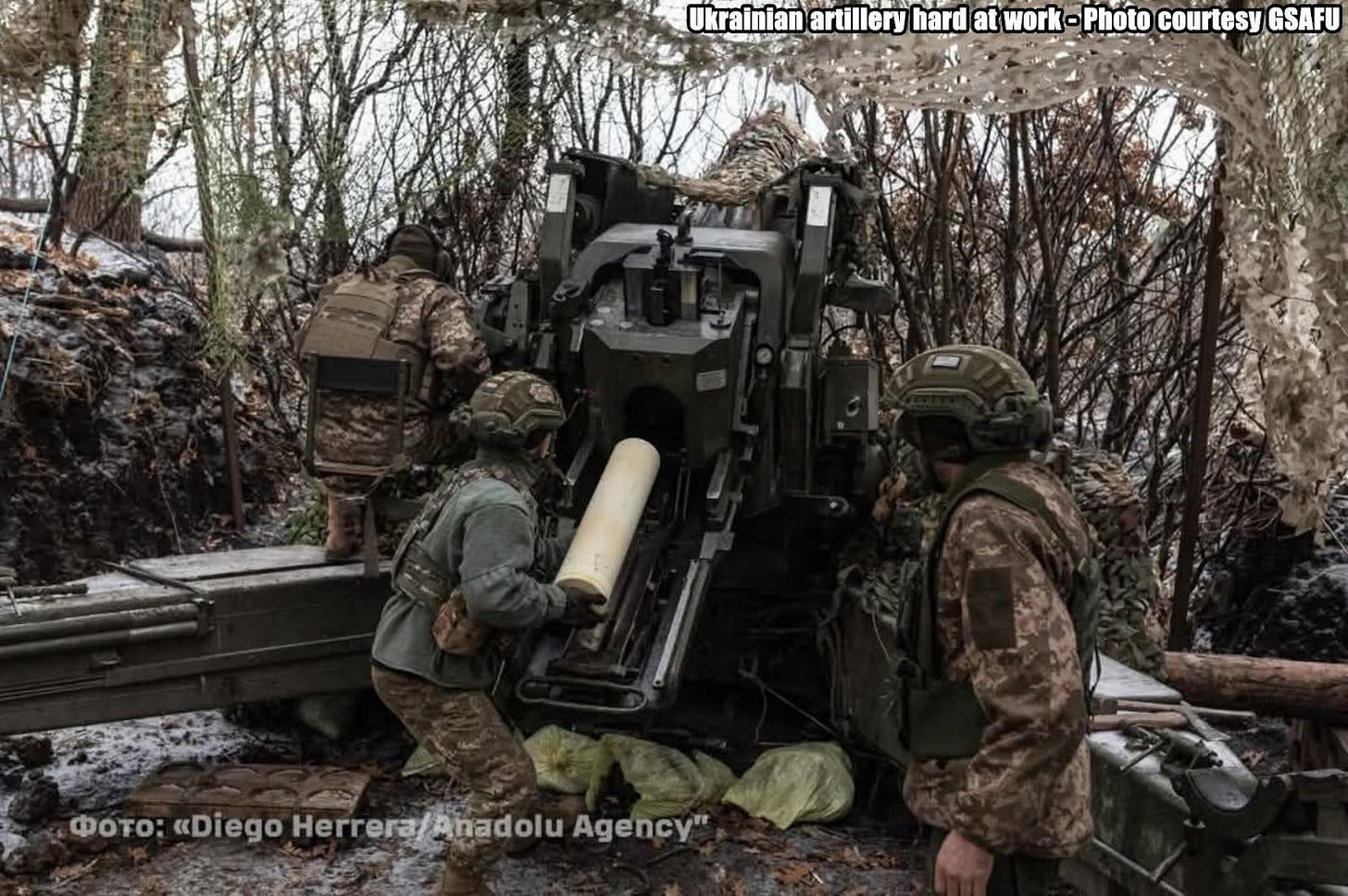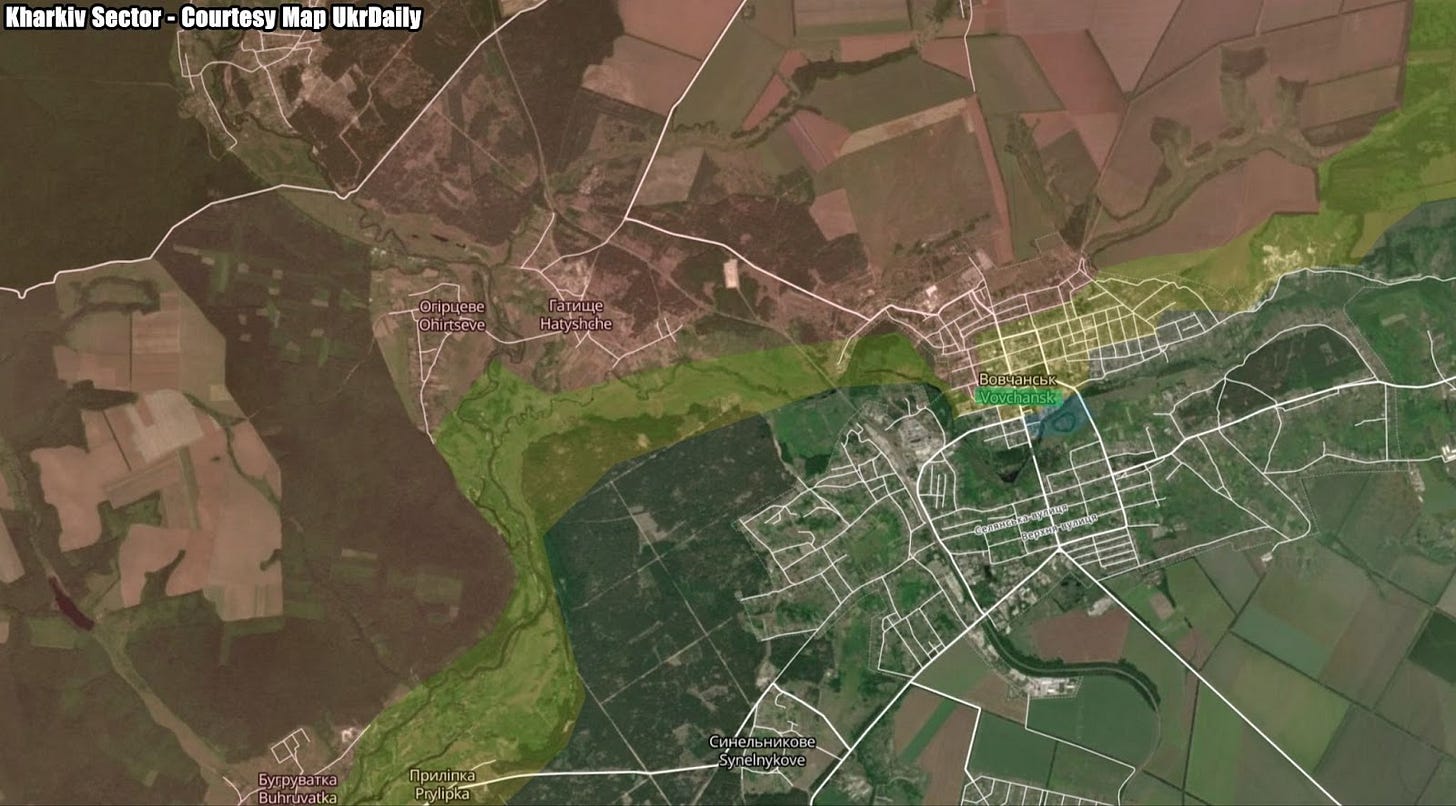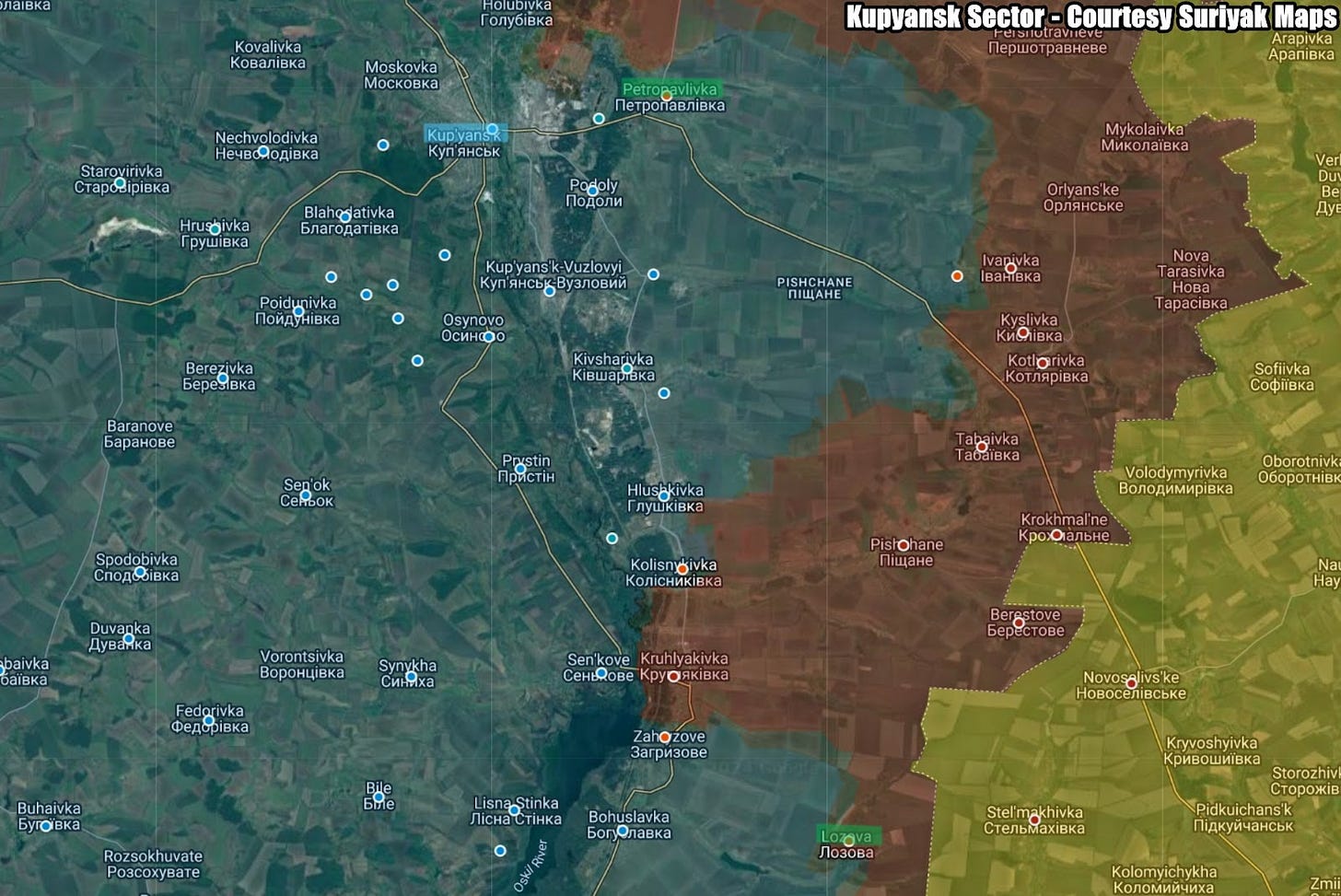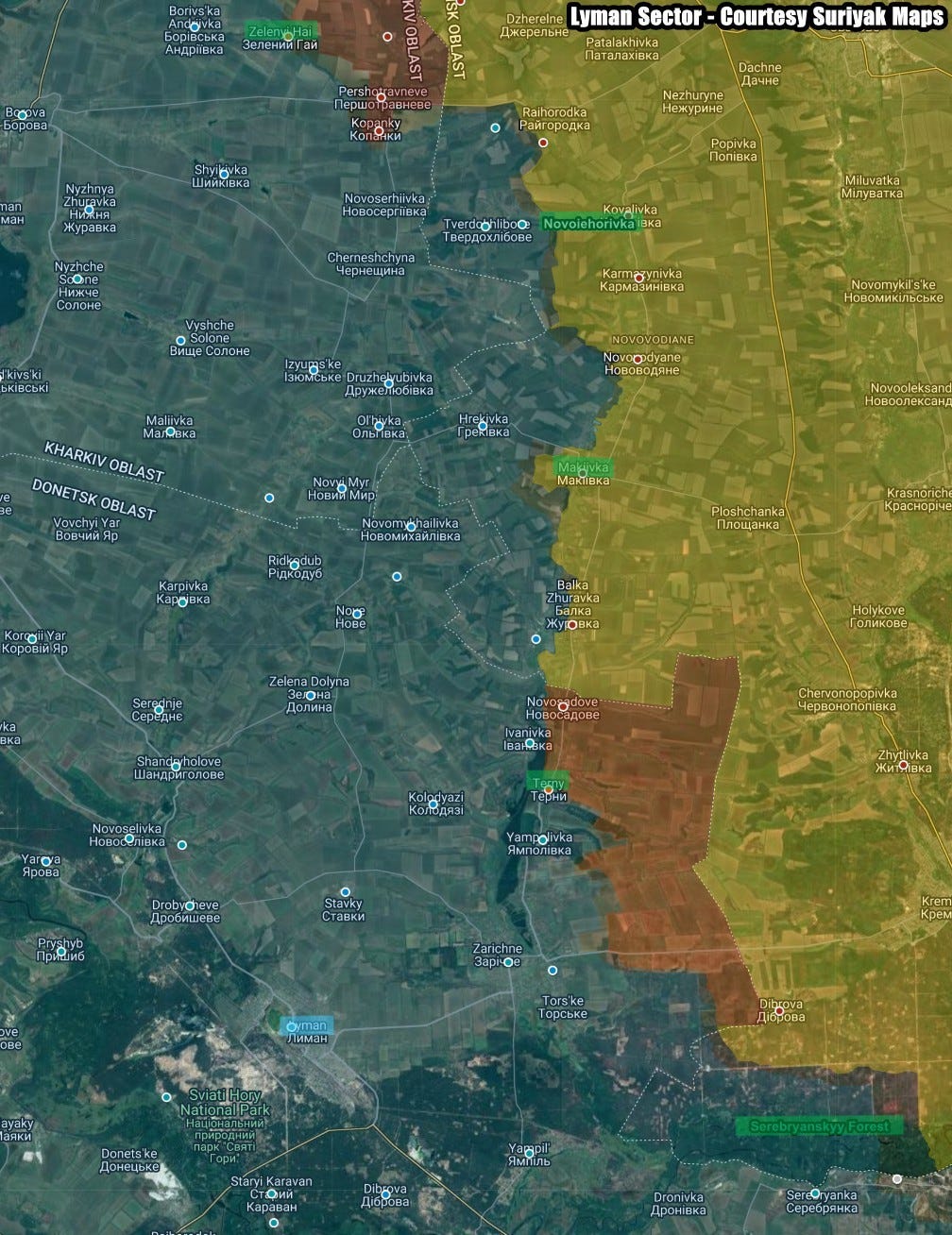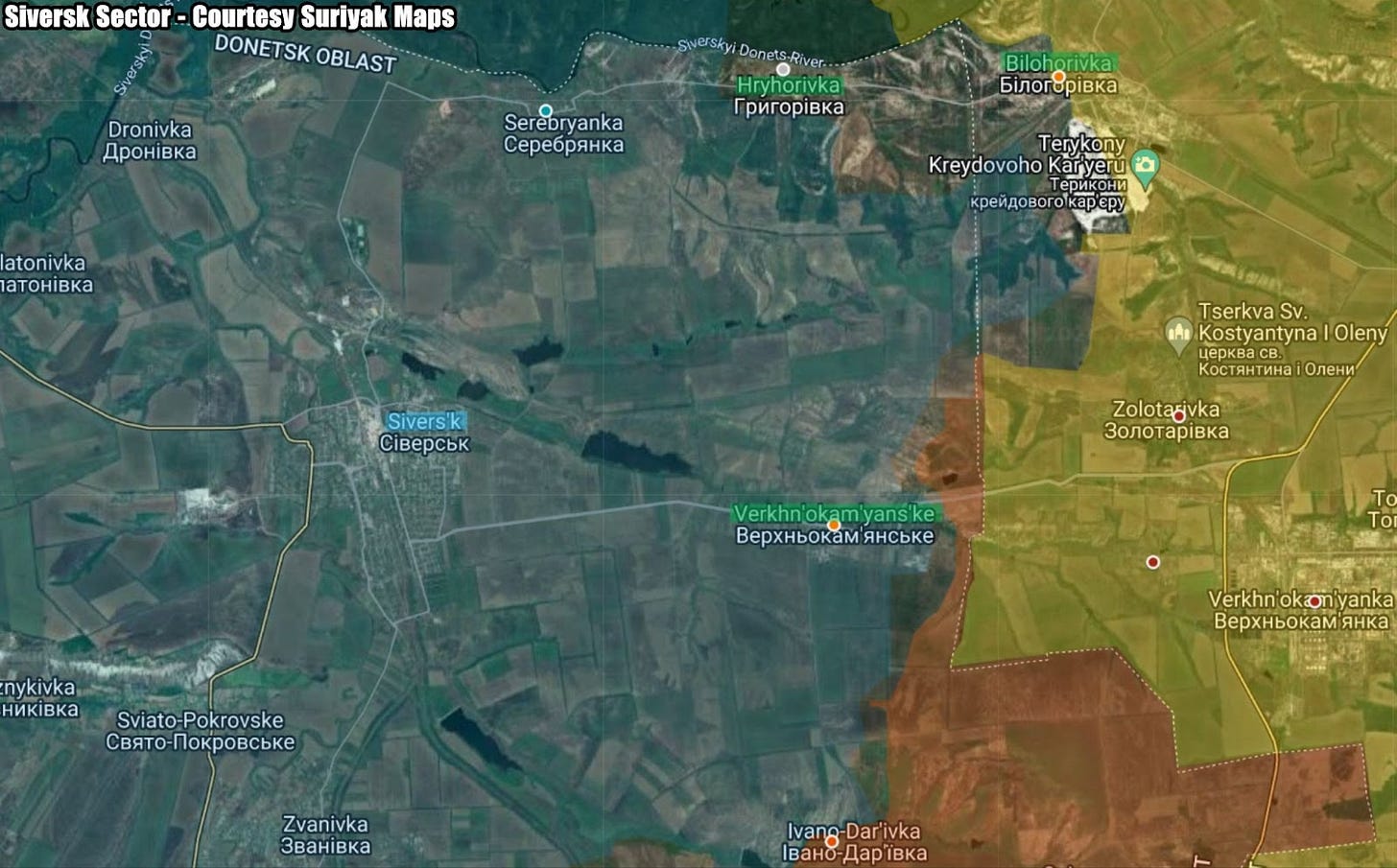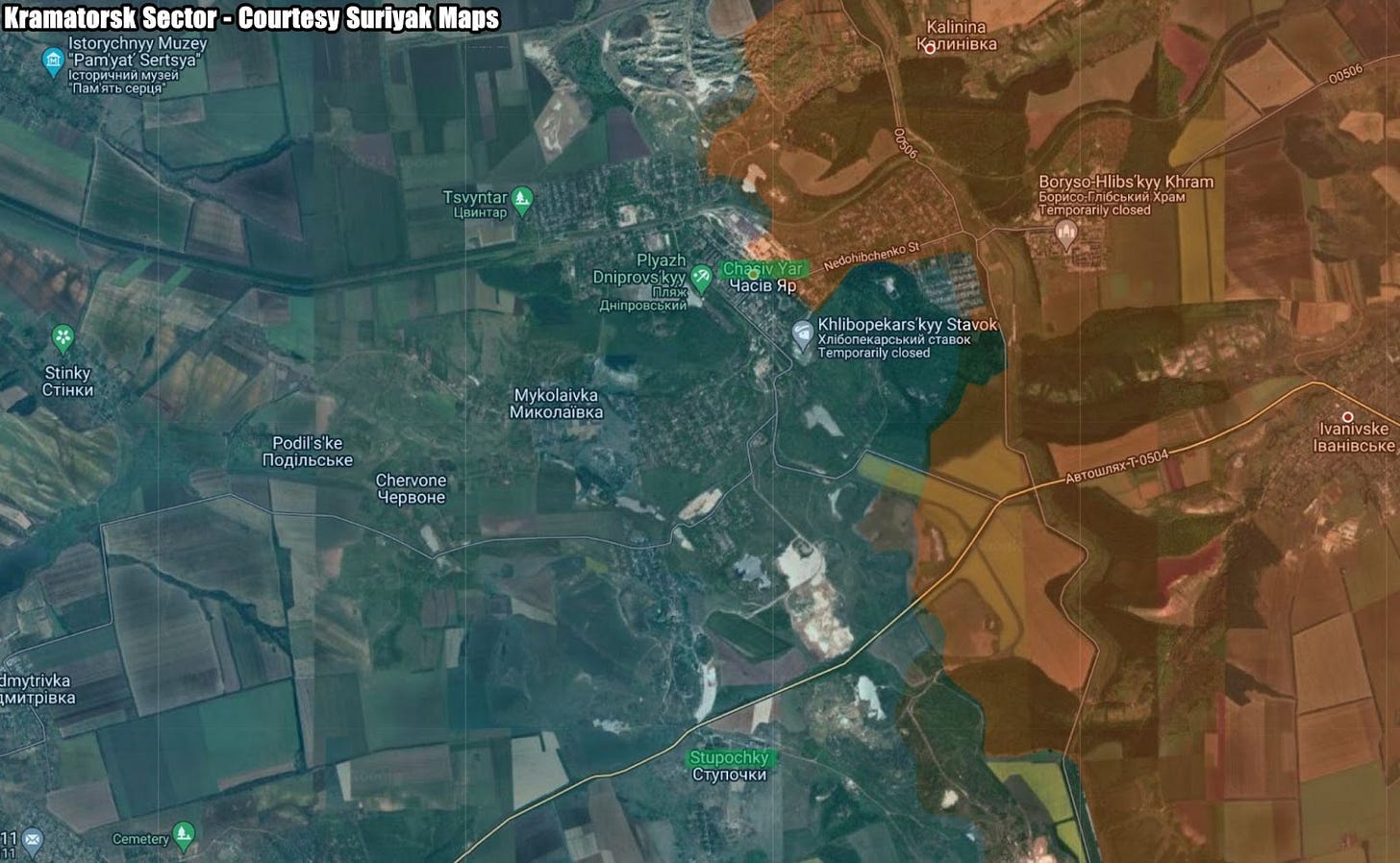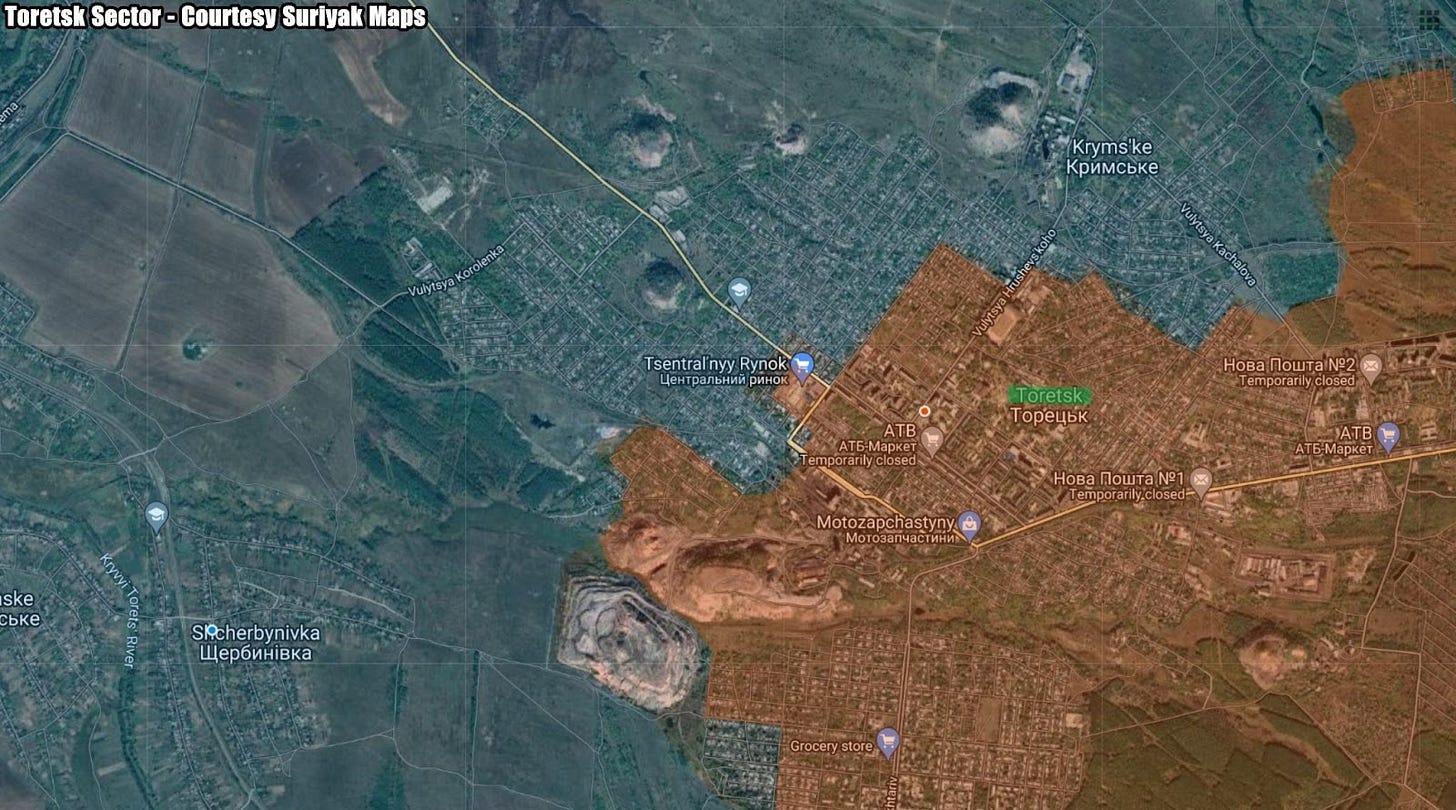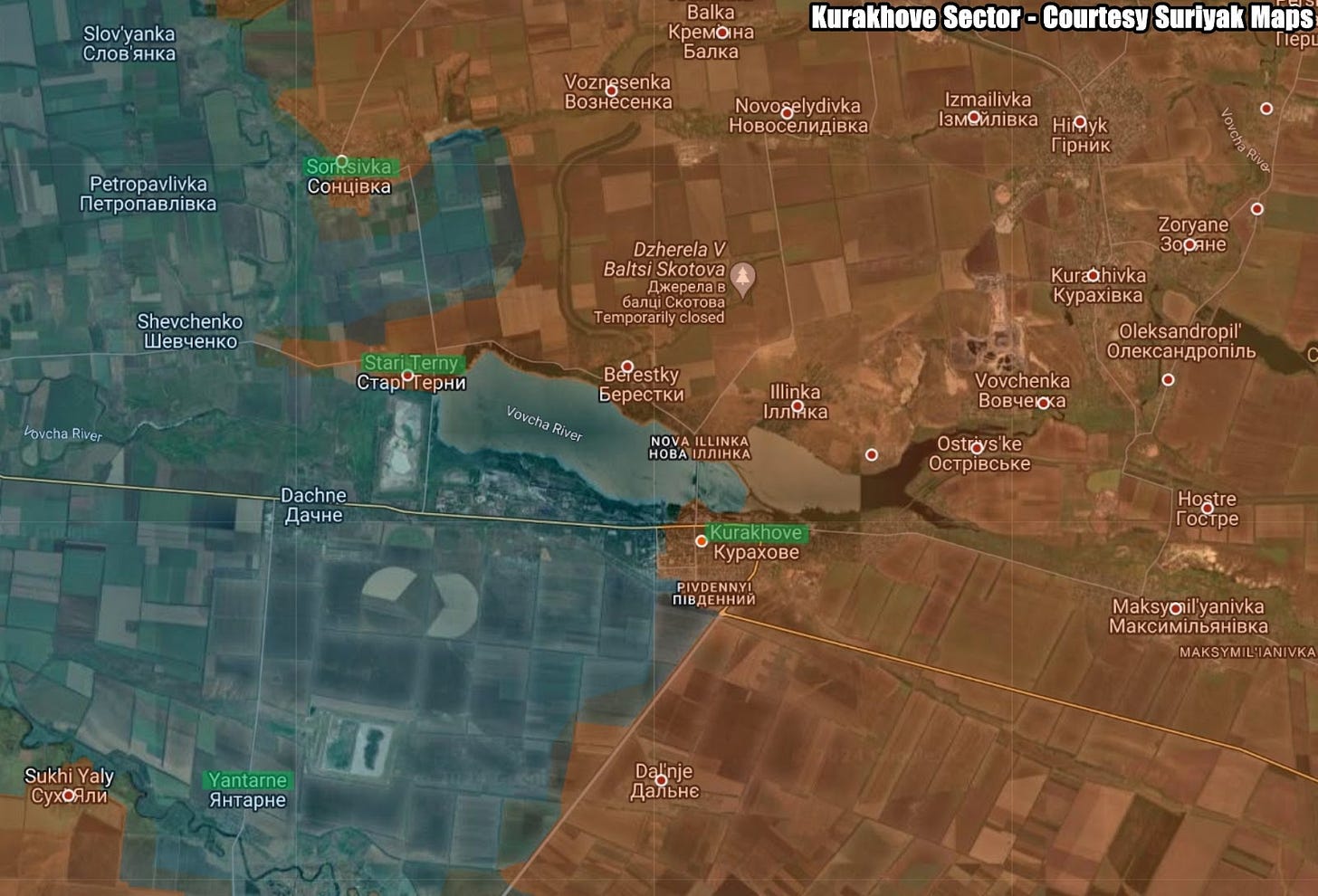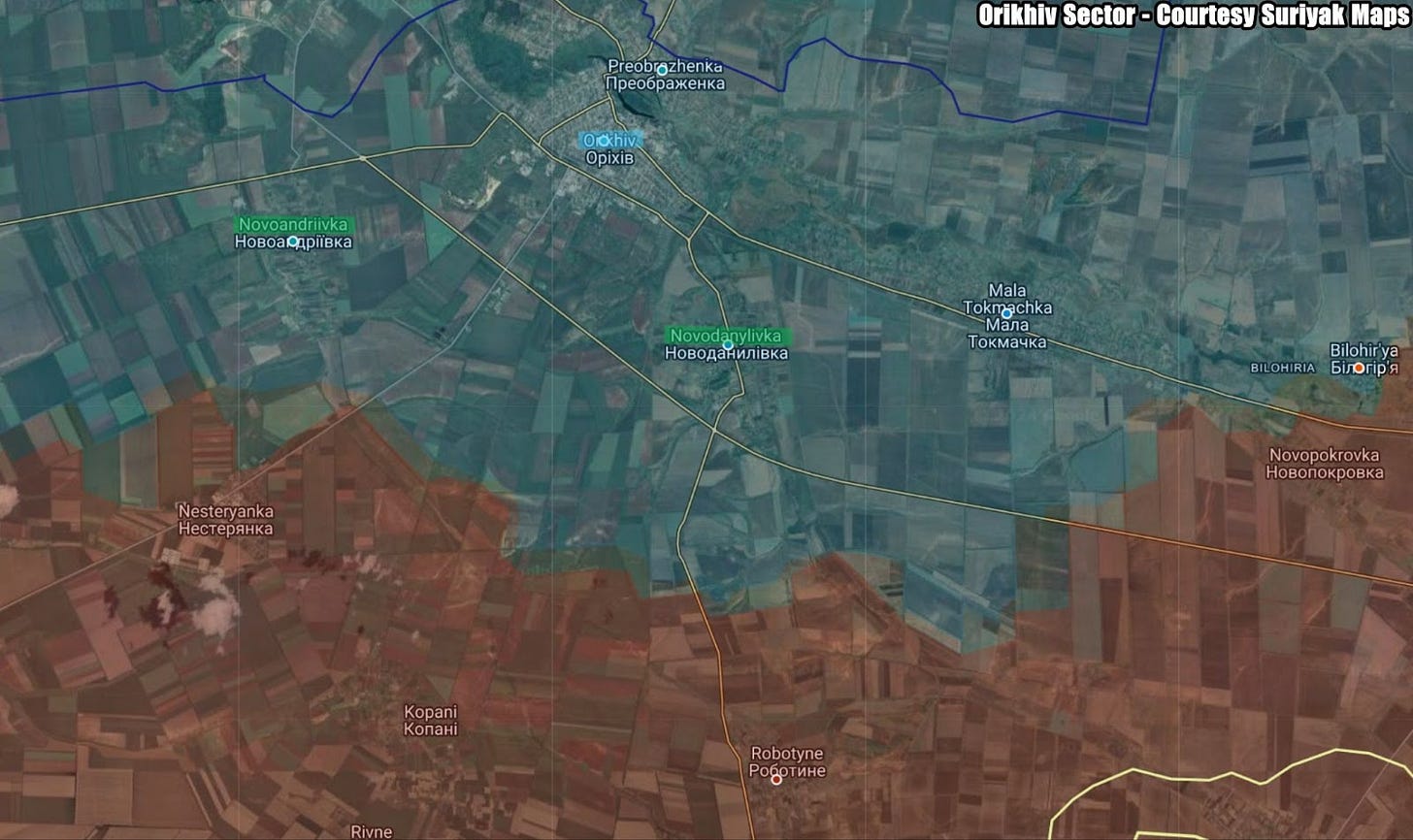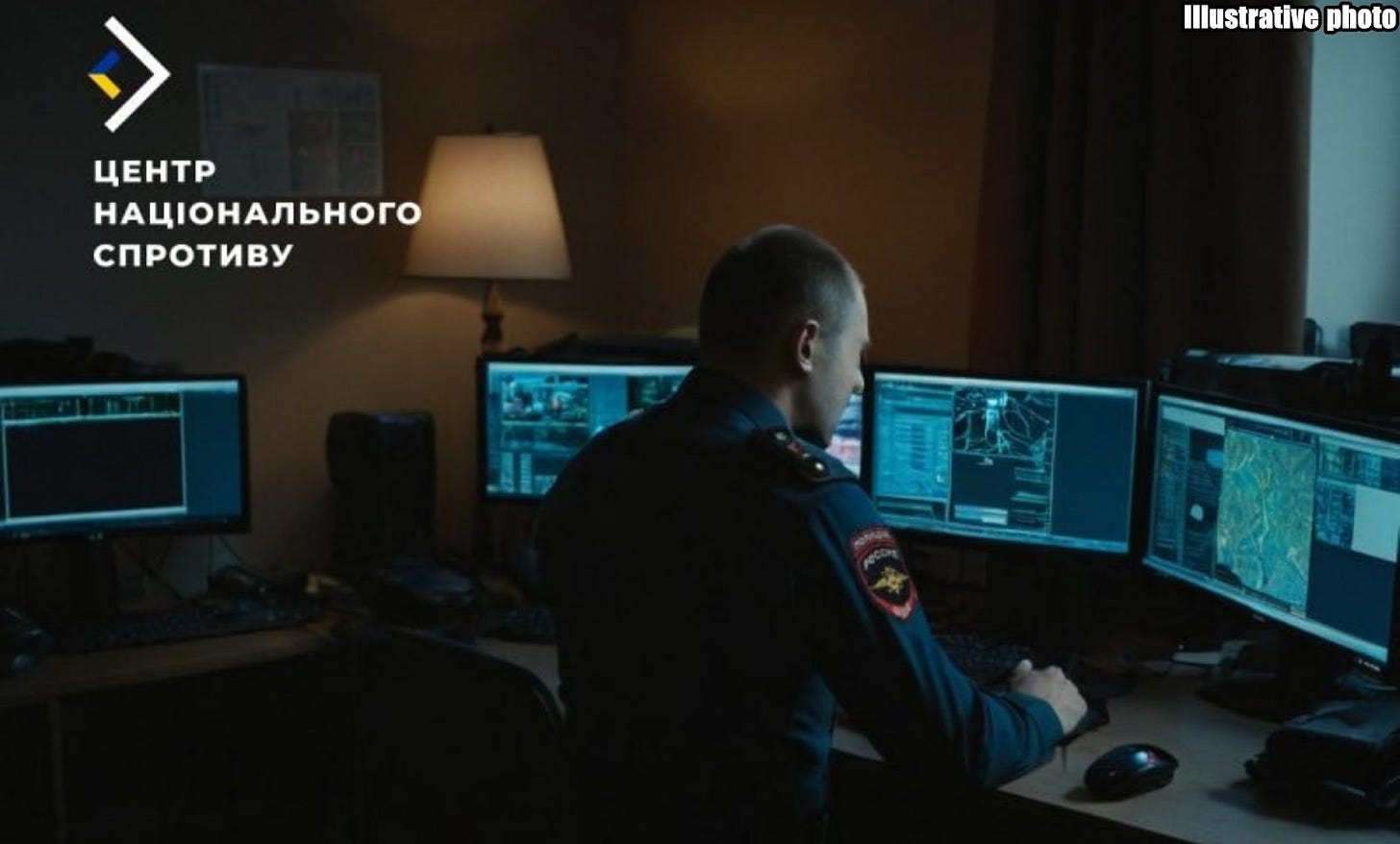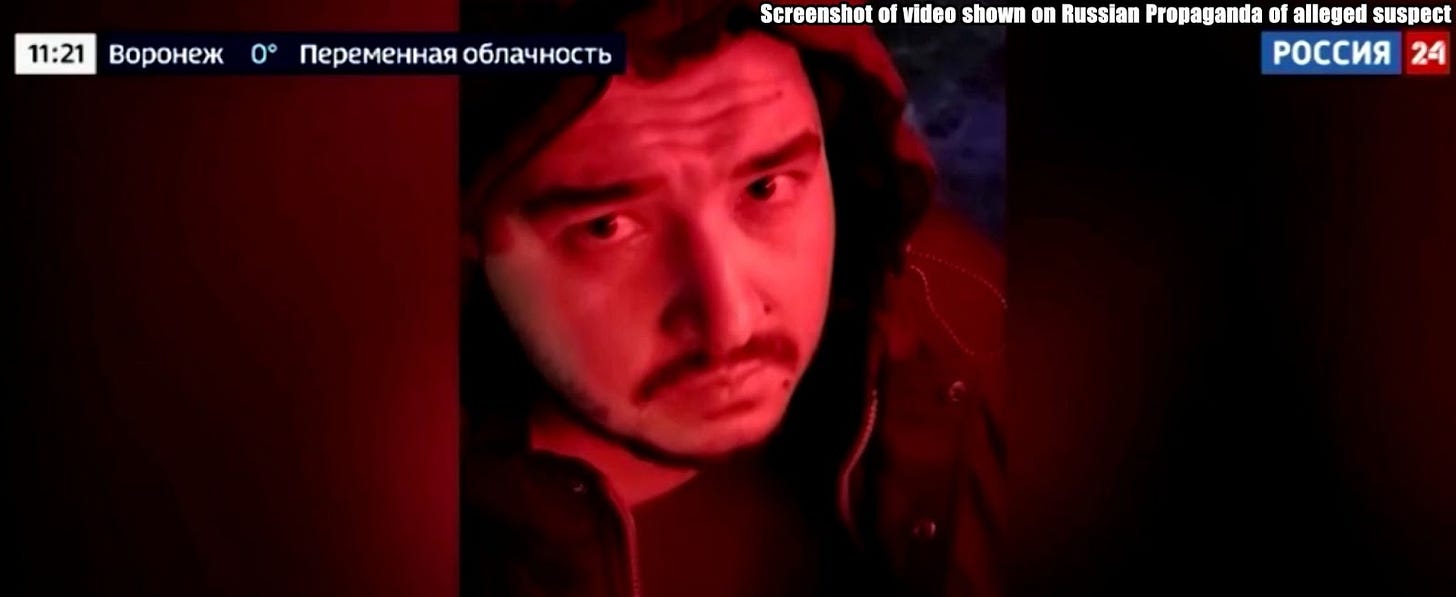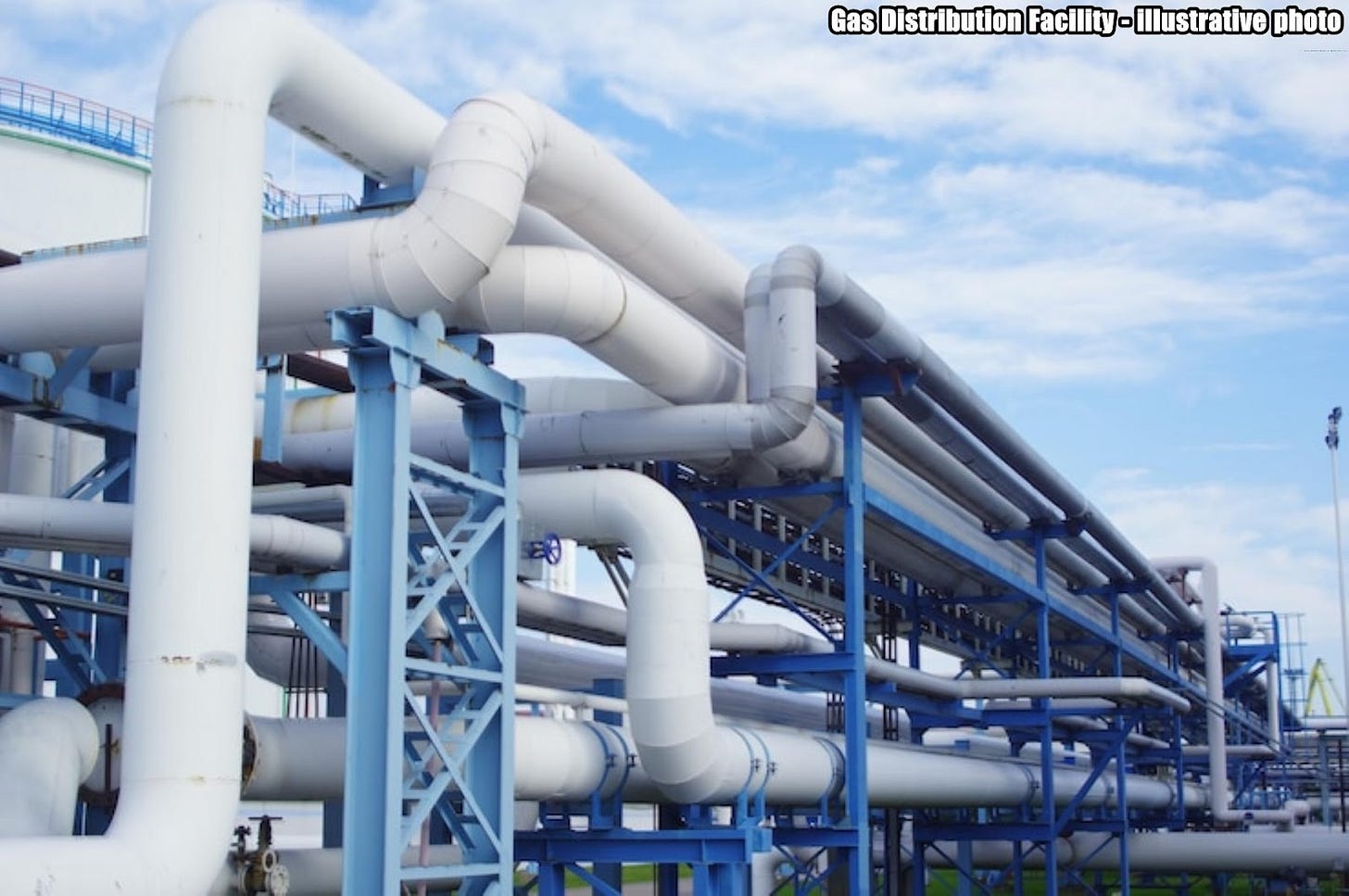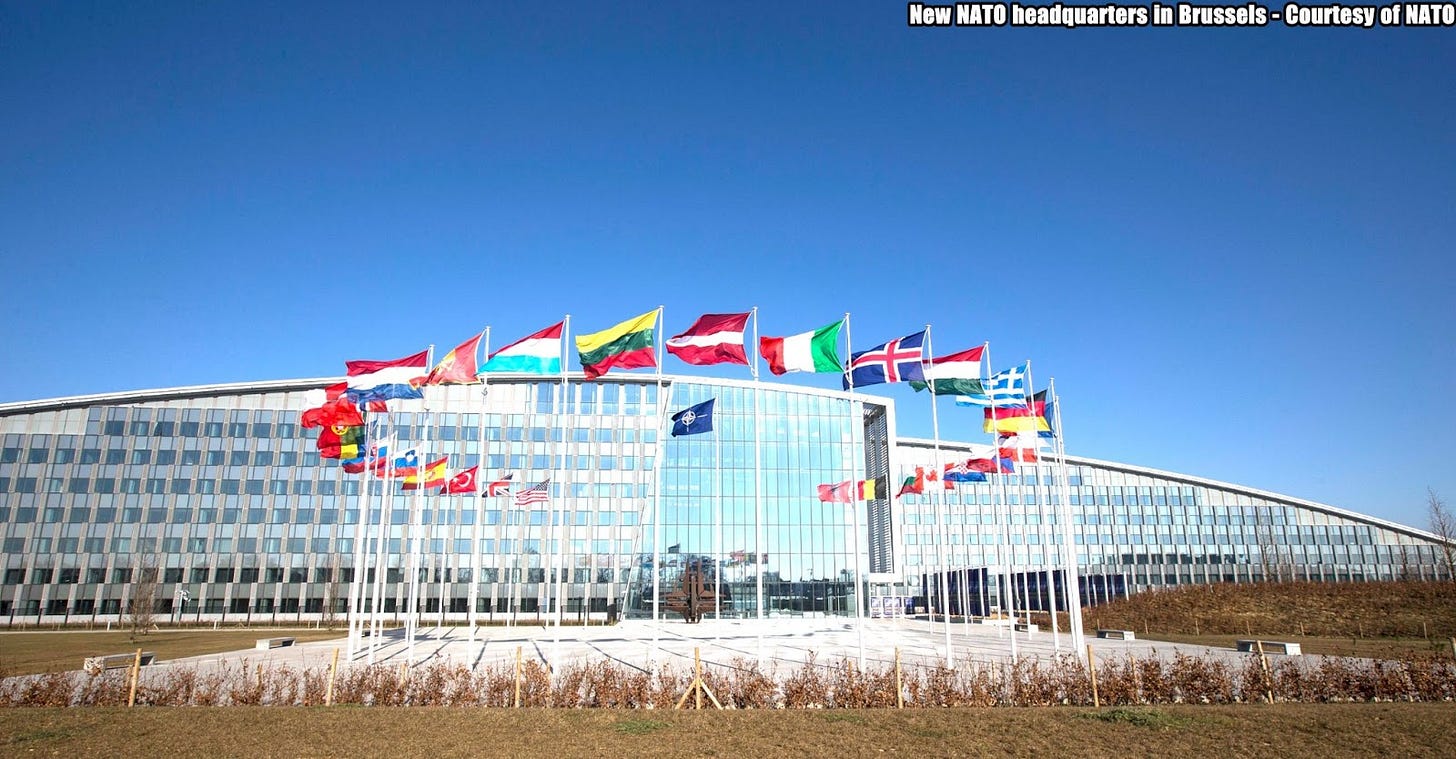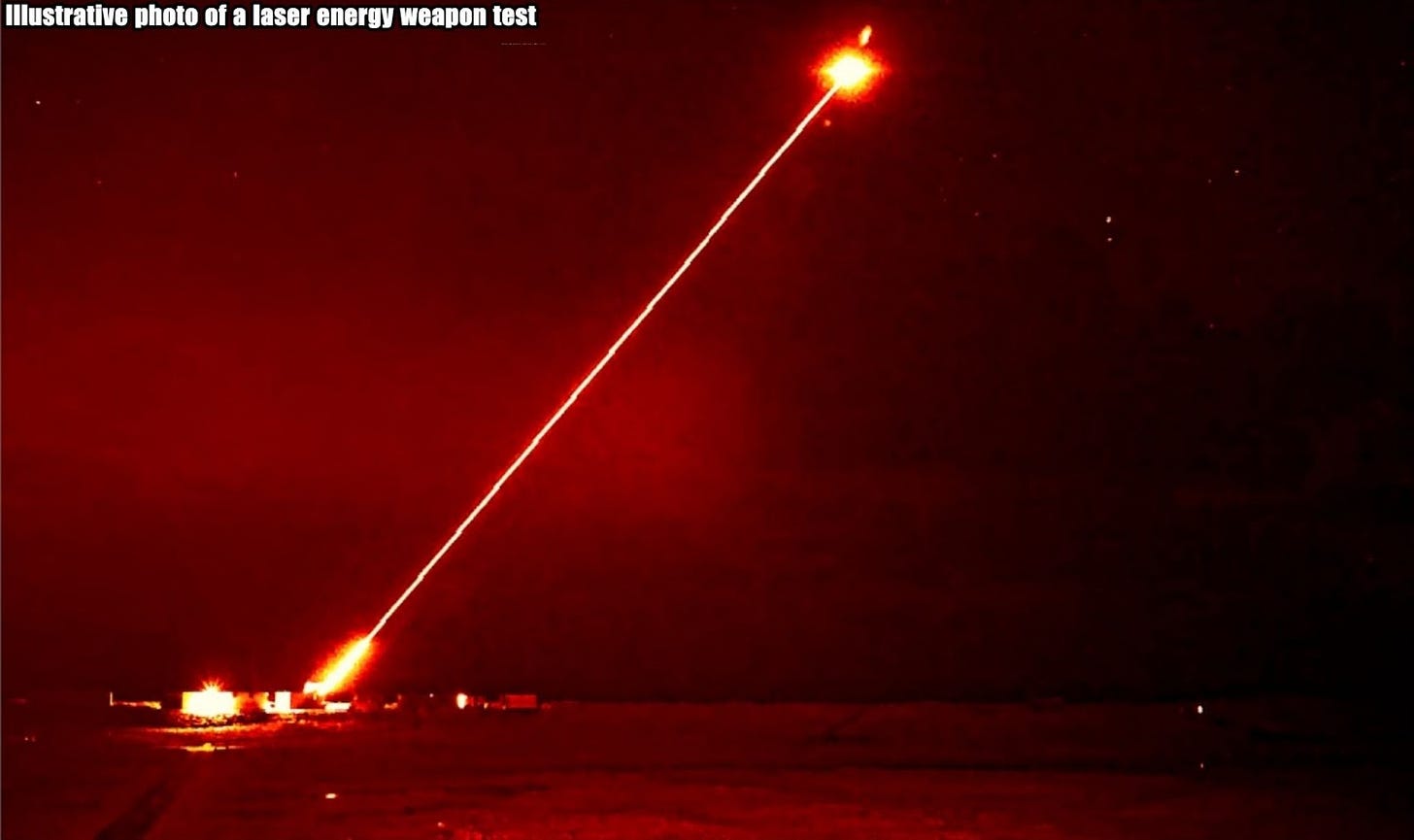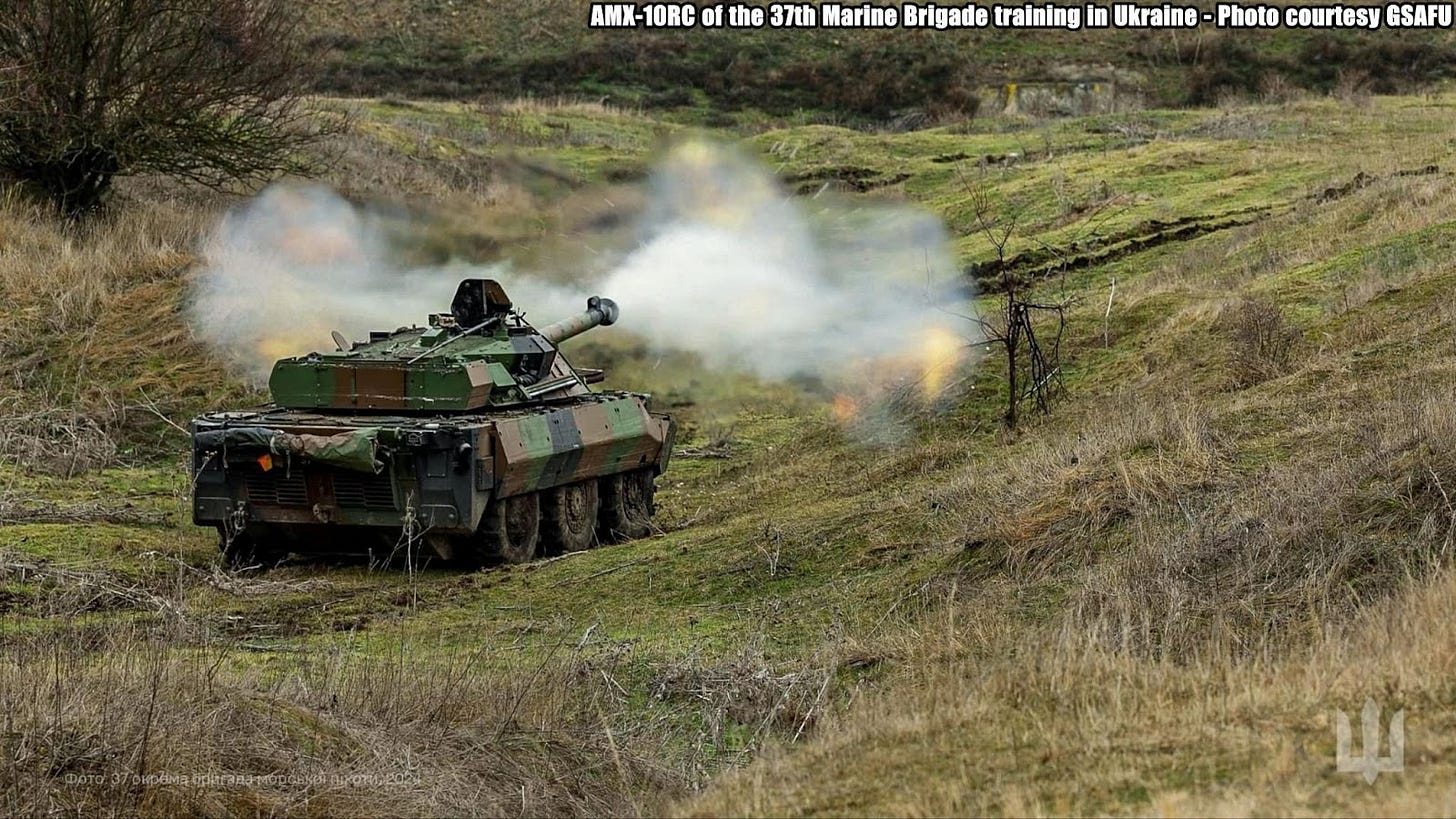Slava Ukraini! In early 2022 I began a Telegram channel aggregating news from a number of sources daily on the war in Ukraine. In June 2023 I began providing a daily draft for the Ukraine War Brief Podcast collecting news from over 70 sources daily, which formed the basis of the script. While the Podcast no longer exists I have continued to make this Brief available for my followers here on Substack for those who wish to keep up with the news from the war.
All the latest news on the Russo-Ukraine War 6 days per week
ALONG THE CONTACT LINE
GSAFU Morning Report
The General Staff of the Armed Forces of Ukraine in its Operational Information update at 22:00 on Dec 17 stated that day 1029 of the full-scale invasion of the Russian Federation against Ukraine was about to begin.
During the past day 183 combat engagements took place. Over the past 24 hours, the enemy carried out 1 missile strike, 40 air strikes, 632 drone strikes and more than 3,500 artillery strikes across the positions of Ukrainian forces.
At the same time, Ukrainian soldiers continue to inflict losses in manpower and equipment on the occupying troops, exhausting the enemy along the entire front line and continue to disrupt the plans of Russian occupiers to advance deeper into the territory of Ukraine.
Air Force Daily Report
51 ENEMY UAVS SHOT, ANOTHER 30 DRUANS FAILED TO REACH THEIR TARGETS (LOCATIONALLY LOST)
➖➖➖➖➖➖➖➖➖
On the night of December 18, 2024 (from 7:00 p.m. on December 17), the enemy attacked with the 81st Shahed strike UAV and drones of other types from the Bryansk, Kursk, Millerovo, and Orel regions - Russia.
The air attack was repelled by aviation, anti-aircraft missile troops, electronic warfare units, and mobile fire groups of the Air Force and Defense Forces of Ukraine.
As of 09:00, it was confirmed that 51 Shahed attack UAVs and drones of other types were shot down in Poltava, Sumy, Kharkiv, Kyiv, Zhytomyr, Khmelnytskyi, Cherkasy, Kirovohrad, Dnipropetrovsk and Zaporizhia regions.
As a result of active countermeasures by the Defense Forces, 30 enemy drones were lost in location (without negative consequences).
No hits were recorded, and no information was received regarding damage or casualties.
The Russian Border Incursion
The GSAFU reported that over the previous day Defense Forces of Ukraine continued its operation in Kursk, where the enemy carried out 49 assaults of Ukrainian units positions during a day. The enemy made 8 air strikes and carried out about 500 artillery strikes.
The Institute for the Study of War (ISW), a US based think tank, in its Dec 17 Russian Offensive Campaign Assessment reported that it is likely North Korean soldiers recently advanced within the Kursk Oblast salient amid continued Russian offensive operations in Kursk Oblast on Dec 17. Geolocated footage reportedly of North Korean soldiers published on Dec 16 indicates that North Korean soldiers under Russian command recently advanced northwest and northeast of Malaya Loknya (north of Sudzha). Additional geolocated footage reportedly of North Korean soldiers published on Dec 17 shows that North Korean troops under Russian command also advanced to the west bank of the Psel River just east of Kurilovka (south of Sudzha).
The Economist, quoting an artillery commander of a Ukrainian brigade operating in Kursk Oblast, reported that Russian forces have been intensifying offensive operations and are alternating between mechanized and infantry assaults, while dropping up to 40 glide bombs per day on Ukrainian positions. Russian milbloggers claimed that Russian forces are approaching Kurglenkoye (southeast of Korenevo) and have seized several terrain features west of the settlement, although ISW has not observed confirmation of this claim. Russian milbloggers also claimed that Russian forces continued to advance east of Novoivanovka (also southwest of Korenevo).
Fighting continued throughout the Kursk Oblast salient north of Sudzha near Russkoye Porechnoye, Cherkasskoye Porechnoye, and Malaya Loknya; southeast of Sudzha near Cherkasskaya Konopelka; south of Sudzha near Kurilovka; and southeast of Korenevo near Novoivanovka, Kremyanoye, and in the direction of Sverdlikovo. Russian sources claimed that elements of the 56th Airborne (VDV) Regiment (7th VDV Division) recently seized Novoivanovka. Elements of the Russian 155th Naval Infantry Brigade (Pacific Fleet, Eastern Military District [EMD]) are reportedly also operating near Novoivanovka.
The Khortytsia operational-strategic group
(Responsible for the northeastern part of Ukraine. )
Kharkiv Sector: Over the last day in this sector Ukrainian Defense Forces repelled 2 Russian attacks in the area of Vovchansk.
Kupyansk Sector: Russian Forces carried out offensive actions against Ukrainian defensive positions near Petropavlivka and Lozova. 1 engagement is ongoing.
Lyman Sector: Russian Forces carried out 21 offensive actions against Ukrainian defensive positions near Zelenyi Hai, Novoiehorivka, Makiivka, Terny and the Serebryanskyy Forest. 3 engagements are ongoing.
Siversk Sector: Over the last day Russian forces carried out 9 offensive actions against Ukrainian defences in the vicinity of Hyhorivka, Bilohorivka and Verkhnokamianske. 3 engagements are ongoing.
Kramatorsk Sector: Russian Forces carried out 3 offensive actions against Ukrainian defensive positions near Chasiv Yar and Stupochky.
Toretsk Sector: Russian Forces carried out 3 offensive actions against Ukrainian defensive positions near Toretsk.
The Tavria operational-strategic group
(Responsible for the central-eastern and southeastern part of Ukraine.)
Pokrovsk Sector : Over the last day, Russian Forces carried out 35 offensive actions against Ukrainian defensive positions mainly in the vicinity of Myrolyubivka, Promin, Lysivka, Dachenske, Pishchane, Novoielyzavetivka, Novoolenivka, Chumatske and Ukrainka. 12 engagements are ongoing.
Kurakhove Sector: Russia conducted 26 offensive actions over the last day in the vicinity of Sontsivka, Stari Terny, Kurakhove and Yantarne. 6 engagements are ongoing.
Vremivka Sector: Russian forces made 22 attempts to break through Ukrainian defences in the vicinity of Temyrivka, Novopil, Novodarivka, Novosilivka, Sukhi Yaly and Kostiantynopolske. 9 engagements are ongoing.
Orikhiv Sector: Russian forces made 3 attempts to break through Ukrainian defences in the vicinity of Novoandrivka and Novodanylivka.
The Odesa operational-strategic group
(Responsible for Kherson, Qırım, (also known as Crimea) and the Black Sea.)
Prydniprovsk Sector: In this sector, over the last day, there has been no significant change in the combat environment.
TEMPORARILY OCCUPIED TERRITORIES
Russia intensifies monitoring of social networks in TOT, detaining Ukrainians for posts
Russian security forces have intensified monitoring of social networks in the temporarily occupied territories of Ukraine, including checking not only posts but also preferences, Censor.NET reports citing the National Resistance Center.
If "undesirable" publications are found, Ukrainians are detained and accused of "publicly justifying terrorism." The detainees are often taken to FSB units, where they are subjected to harsh interrogations and can be sentenced to long prison terms.
"The Kremlin's repressive system continues to work for the TOT, and given that it is working on a planned basis, we should not expect any relaxation. We urge you to be vigilant and not to expose yourself to danger once again, because the highest value is human life," the NRC notes.
THE HOME FRONT
Ukraine delivered 200,000 domestically-produced drones to front-line units so far in December
Ukraine has delivered more than 200,000 domestically-produced drones to front-line units so far in December, The Kyiv Independent reported citing Defense Minister Rustem Umerov in a Facebook post on Dec. 18.
"Alongside equipment from our partners, more and more Ukrainian-made weapons are already operating on the frontlines — a joint effort of defenders and manufacturers," Umerov said.
Domestically manufactured drones help Kyiv close the ammunition gap as they face Russian forces with more artillery shells on the battlefield.
Ukraine also aims to ramp up the production of long-range drones and missiles as part of the country's resilience plan.
Zelensky previously said Ukraine aims to produce at least 30,000 long-range drones in 2025, used to target Russian warships, naval bases, oil refineries, and airfields inside occupied territories and deep behind enemy lines.
The Unmanned Systems Forces was established in September to improve Ukraine's work with drones, form special drone-specific units, and improve the production, training, and innovation of unmanned vehicles.
Various aerial, naval, and ground drones have been developed and often successfully used for reconnaissance, combat, and other tasks throughout the full-scale with Russia.
The Ukrainian military has proven to be a pioneer in drone technology, using innovative ways to undermine Russia's material and numerical advantage.
Aerial drones have been used to ram into Russian helicopters or drop molten metal on ground positions, while naval drones were a key component in upending Russia's dominance in the Black Sea.
In turn, Russia has also widely deployed drone capabilities during the full-scale invasion, both on the battlefield and to attack Ukrainian cities and infrastructure.
RUSSIAN WORLD
Russia detains suspect over assassination of chemical weapons chief Igor Kirillov
Russia said on Wednesday it had detained an Uzbek man who had confessed to planting and detonating a bomb which killed a top general, Igor Kirillov, in Moscow on the instructions of Ukraine's SBU security service.
Kirillov, who was chief of Russia's Nuclear, Biological and Chemical Protection Troops, was killed outside his apartment building on Tuesday along with his assistant when a bomb hidden in an electric scooter went off.
He is the most senior Russian military officer to be assassinated in Russia by Ukraine. Ukraine's SBU intelligence service took responsibility for the killing after Ukraine accused Kirillov of being responsible for the use of chemical weapons against Ukrainian troops - something Moscow denies.
Russia's Investigative Committee, which probes serious crimes, said in a statement on Wednesday that the unnamed suspect had told them he had come to Moscow to carry out an assignment for Ukraine's intelligence services.
In a video published by the Baza news outlet, which is known to have sources in Russian law-enforcement circles, the suspect is seen sitting in a van describing his actions.
It was not clear under what conditions he was speaking and Reuters could not immediately verify the video's authenticity.
Dressed in a winter coat, the suspect is shown saying he had come to Moscow at the orders of Ukraine's intelligence services, bought an electric scooter and received an improvised explosive device.
He describes placing the device on the electric scooter and parking it outside the apartment block where Kirillov lived.
Investigators cited him as saying he set up a surveillance camera in a hire car which, they said, was watched in the Ukrainian city of Dnipro by people who organised the killing.
The suspect, who is thought to have been born in 1995, is shown saying he remotely detonated the device when Kirillov left the building. He says Ukraine had offered him $100,000 and residency in a European country.
Gazprom shares fall to 16-year low
Russian state energy giant Gazprom saw its shares plummet to a 16-year low on Tuesday, the RBC news website reported, as an agreement that has allowed Russian gas to flow to Europe through Ukraine was set to expire in two weeks. The Moscow Times reports.
Gazprom was trading at 106.1 rubles ($1.02) per share on the Moscow Stock Exchange at its lowest point on Tuesday afternoon, a 2.41% decline from the previous day. That marks the lowest share price since Jan. 26, 2009, when Gazprom shares traded at 101.64 rubles.
The decline comes after Kyiv reiterated Monday that it would not extend an agreement with Russia on gas transit to Europe via Ukrainian territory after it ends on Jan. 1, 2025.
RBC said Gazprom’s shares declined due to a combination of the company’s falling profits, “geopolitical risks,” suspended dividend payments to shareholders and overall market performance.
The Moscow Stock Exchange, where Gazprom accounts for 11% of total shares, was also down almost 2% on Tuesday.
Gazprom, once Russia’s most profitable company, lost around $7 billion in 2023 as Europe cut purchases of Russian gas by more than 90% following the full-scale invasion of Ukraine the year before.
Russia has since pivoted to buyers in Asia like China and India.
Gazprom leaves Russian enclave in cold, Moldova braces for impact
Russia's gas giant Gazprom has not reserved any gas transit capacity for the unrecognized Moscow-backed separatist enclave of Transnistria for January 2025, Moldova's Energy Ministry reported on Dec. 17,New Voice reports citing the Interfax-Ukraine news agency.
The auction among international traders took place on Dec. 16. Currently, Gazprom's natural gas supplies to Transnistria via Ukraine amount to 5.7 million cubic meters per day.
The ministry further explained that the daily consumption of natural gas on the left bank of the Dniester River (Transnistria) in January 2025, in particular at the Moldovan hydroelectric power plant (HPP) for electricity generation, is estimated at 3.7 million cubic meters per day. If the Moldovan thermal power plant (TPP) is fired by coal, Transnistria's daily consumption is estimated to be between 2.3 and 2.7 million cubic meters per day, taking into account minimized industrial activity and measures taken to reduce consumption. Both facilities are located in Transnistria.
The next auction for reservation of transportation capacities for January will be held daily starting from Dec. 31, 2024 and throughout January. However, in case of daily reservations, the cost of gas transit will be higher.
The Moldovan government has not ruled out the termination of Russian gas supplies to Transnistria after Jan. 1, 2025. Consequently, the Moldovan parliament has decided to introduce a state of emergency for 60 days starting from Dec. 16. Similarly, the administration of the unrecognized Transnistria has also announced the introduction of a state of emergency in the economy for 30 days starting from Dec. 11.
If Russian gas does not flow to the left bank of the Dniester, there will be blackouts on the Chisinau-controlled right bank, as Moldova receives about 70% of its electricity from the Moldovan HPP in Transnistria.
On Nov. 25, during Russian-Moldovan talks in St. Petersburg, a new gas supply route bypassing Ukraine through Turkey was discussed. However, this alternative route also crosses Ukrainian territory.
Moldova purchases Russian gas for Transnistria via Ukraine, with a contracted volume of 9 million cubic meters per day, although only about 5.7 million cubic meters are currently supplied. This entire volume stays in Transnistria, while Chisinau imports gas from the European market through the Yassy-Ungheni-Chisinau pipeline from Romania.
INTERNATIONAL NEWS
Zelenskyy: Trump eager for solutions, Ukraine firm on sovereignty
U.S. President-elect Donald Trump understands that Ukraine will not agree to surrender or freeze the war, President Volodymyr Zelenskyy said in an interview with Le Parisien newspaper published on Dec. 17.
Trump is eager to find a solution to the conflict but “he is not yet in the White House and cannot have access to all the information: intelligence, the Department of Defense, certain diplomatic channels, etc. When he is there, we will be able to speak the same language, with the same level of information,” Zelenskyy said.
"The country has been fighting for its sovereignty for a long time. No matter how many presidents or prime ministers want to declare the end of the war, we will not give up and surrender our independence."
He stressed the importance of the changes in the United States with Trump in the White House, as well as Ukraine's cooperation with the new administration.
"We will build relations with the new administration, and this will be our priority. The United States has been and will remain our leading donor in this war, although I would like to emphasize that both Europe and the United States are important for Ukraine. We are not putting one above the other. America can influence Putin. The European Union is our future. We see ourselves there.”
NATO takes over coordination of military aid to Kyiv from US
NATO has taken over coordination of Western military aid to Ukraine from the U.S. as planned, a source said on Tuesday, in a move widely seen as aiming to safeguard the support mechanism against NATO sceptic U.S. President-elect Donald Trump. Reuters reports.
The step, coming after a delay of several months, gives NATO a more direct role in the war against Russia's invasion while stopping well short of committing its own forces.
Diplomats, however, acknowledge that the handover to NATO may have a limited effect given that the U.S. under Trump could still deal a major setback to Ukraine by slashing its support, as it is the alliance's dominant power and provides the majority of arms to Kyiv.
Trump, who will take office in January, has said he wants to end the war in Ukraine swiftly but not how he aims to do so. He has long criticised the scale of U.S. financial and military aid to Ukraine.
The headquarters of NATO's new Ukraine mission, dubbed NATO Security Assistance and Training for Ukraine (NSATU), is located at Clay Barracks, a U.S. base in the German town of Wiesbaden.
A person familiar with the matter told Reuters it was now fully operational. No public reason has been given for the delays.
NATO's military headquarters SHAPE said its Ukraine mission was beginning to assume responsibilities from the U.S. and international organizations.
"The work of NSATU ... is designed to place Ukraine in a position of strength, which puts NATO in a position of strength to keep safe and prosperous its one billion people in both Europe and North America," said U.S. Army General Christopher G. Cavoli, the Supreme Allied Commander Europe.
"This is a good day for Ukraine and a good day for NATO."
In the past, the U.S.-led Ramstein group, an ad hoc coalition of some 50 nations named after a U.S. air base in Germany where it first met, has coordinated Western military supplies to Kyiv.
Trump threatened to quit NATO during his first term as president and demanded allies must spend 3% of national GDP on their militaries, compared with NATO's target of 2%.
Meanwhile, the outgoing Biden administration in Washington is scrambling to ship as many weapons as possible to Kyiv amid fears that Trump may cut deliveries of military hardware to Ukraine.
NSATU is set to have a total strength of about 700 personnel, including troops stationed at NATO's military headquarters SHAPE in Belgium and at logistics hubs in Poland and Romania.
MILITARY & TECH
Ukraine says it has laser weapon able to down targets flying at over 2km
Reuters reported on Dec 16 that Ukraine claims it possesses a laser weapon capable of shooting down airborne targets at an altitude of more than 2 kilometres (1.2 miles), the country's drone forces commander said on Monday. The military official, Vadym Sukharevskyi, did not provide any more details in his first official remarks about the existence of the weapon. Reuters was unable to verify his statement.
"Today we can already shoot down aircraft at an altitude of over 2 km with this laser," he was quoted as saying by the Interfax-Ukraine news agency.
Sukharevskyi said the laser was named the Tryzub - the Ukrainian word for a "trident", which is a symbol used on the national coat of arms - suggesting it was domestically produced.
In April, former British Defence Minister Grant Shapps said that Britain's DragonFire laser, which is expected to go into service in 2027, could potentially be used in Ukraine to counter Russian drones.
AMX-10RC on the Battlefield in Ukraine: Improvised Self-Propelled Artillery Praised for Effectiveness Against Enemy Infantry
The Ukrainian Defense Forces have effectively integrated AMX-10RC vehicles into their operations, maximizing their strengths while accounting for their limitations, Defense Express reports.
In early 2023, France announced its intention to supply Ukraine with AMX-10RC vehicles as part of its defense assistance package. By March of the same year, French Armed Forces Minister Sébastien Lecornu confirmed that these vehicles had not only been delivered but were already deployed to the frontlines.
As of now, the Ukrainian Defense Forces have been utilizing the AMX-10RC on the battlefield for over a year and a half. A recent Army TV report featured interviews with the crew of one of these vehicles, shedding light on its combat applications.
Speed and Precision: The Key Advantages
The AMX-10RC's speed and maneuverability are among its most significant strengths, as highlighted by the military personnel operating it. According to the vehicle's commander, known by the call sign Rapier, the crew can quickly reach their positions, complete their tasks, and retreat to safety before being detected or targeted.
The Army TV footage includes an instance where both the reporting crew and the AMX-10RC team were forced to abandon their position rapidly due to an incoming attack by a Russian FPV drone.
Firepower and Target Engagement
The vehicle’s firing rate depends on the efficiency of the loader, typically achieving one shot every six seconds. Over a 60–70 second period, the crew can fire 11–12 rounds.
The AMX-10RC is primarily used to engage infantry and lightly armored enemy equipment. According to the vehicle’s operator, it excels at quickly neutralizing large groups of advancing infantry. Its accuracy is significantly enhanced when fire is adjusted with the help of reconnaissance drones.
The operator, who has been working with the AMX-10RC since the start of his service, regards it as an exceptional machine, praising its ability to deliver precise and effective strikes.
Grumpy here - The AMX-10RC was designed as an armoured fighting vehicle for reconnaissance purposes equipping French cavalry units since 1981. At the time its 105mm main gun was capable of engaging the heaviest armour likely to be encountered on the battlefield, relying on its speed and mobility to get it quickly out of trouble.
With the advent of advanced composite armour, larger guns and more powerful anti-tank missiles that is no longer the case. Ukraine received 38 of these vehicles from France in Mar 2023 they were issued to the 37th Marine Brigade. Initially Ukraine attempted to use them for their intended purpose but in the high intensity of combat at the front they quickly showed they were not up to that task.
However, Ukrainian marines being innovative folk recognized that the AMX-10RC’s 105mm gun could fire an effective HE round making it very effective against infantry and light skinned vehicles. This coupled with its speed and mobility make it highly effective in a support role, able to lay down a volume of fire to suppress an enemy advance, and then quickly relocate to avoid counter battery fire, set up in a new location and do it all over again. The AMX-10RC’s night vision capabilities allow it to operate at night also.
That’s it for today’s Brief folks if you would like to keep up with events in Ukraine daily please consider subscribing.
Feel free to share this update with your friends. Heroyam Slava!






